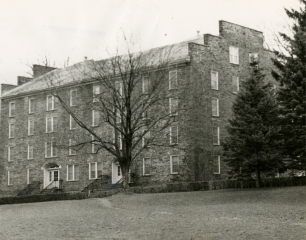achieved a fair degree of maturity, a status which must have cheered
the Trustees while at the same time it presented new problems. The Board hoped for State aid since the opening of the collegiate department to non-ministerial students in 1839 made that division the equivalent of a regular college. Students who entered the collegiate course, meanwhile, began to ask for baccalaureate degrees. Efforts to get State patronage and permission to grant degrees were the back- ground of the movement for incorporation which eventually attained success with the granting of the Madison University Charter in 1846.
The first suggestion that State money might be available came in 1839 from Charles Walker of Utica, a trustee and a member of the State Assembly. He and Friend Humphrey of Albany, likewise a trustee and a member of the Senate, were authorized to petition the legislature in January, 1840, for an annual appropriation of $5,000. Their exertions were unavailing, however, since the legislature refused to grant funds to an unincorporated institution.
To obviate this objection, the Executive Committee, faculty, several Board members, and citizens of Hamilton and vicinity immediately took steps to get the collegiate department incorporated as Hamilton University. The Assembly unanimously approved their petition in April, 1840, but the next month it was rejected by a 16 to 9 vote in the Senate. The reason was that the proposed university did not meet conditions which the Regents of the University of the State of New York imposed on all institutions asking for charters, namely, that they possess specified assets of not less than $70,000. Though the resources of the Institution were estimated at more than this sum, they were not invested and secured as the Regents required.
Dr. Kendrick, who was much more interested in training Baptist ministers than in seeing the collegiate department expand, opposed the charter movement as strongly as he had the admission of non-ministerial students. He was apprehensive lest the collegiate department become independent of the other divisions with the result that the local advantages for theological education might be impaired. He also feared that incorporation would make the Institution less dependent on the churches, whose agent it had always been, and, consequently, less responsive to their needs. Furthermore, he questioned whether, if a charter were obtained, Hamilton would be the best location for the collegiate department, thus anticipating one of the important issues of





